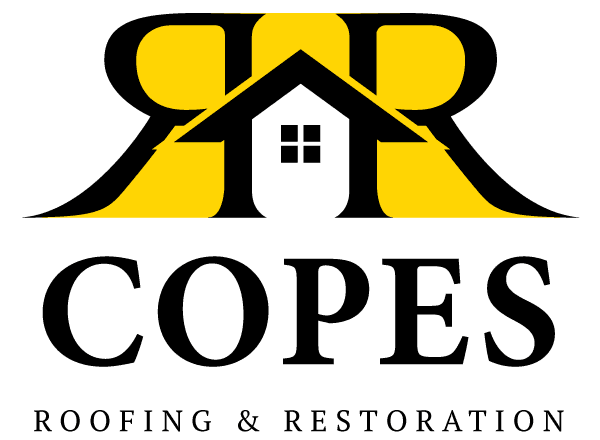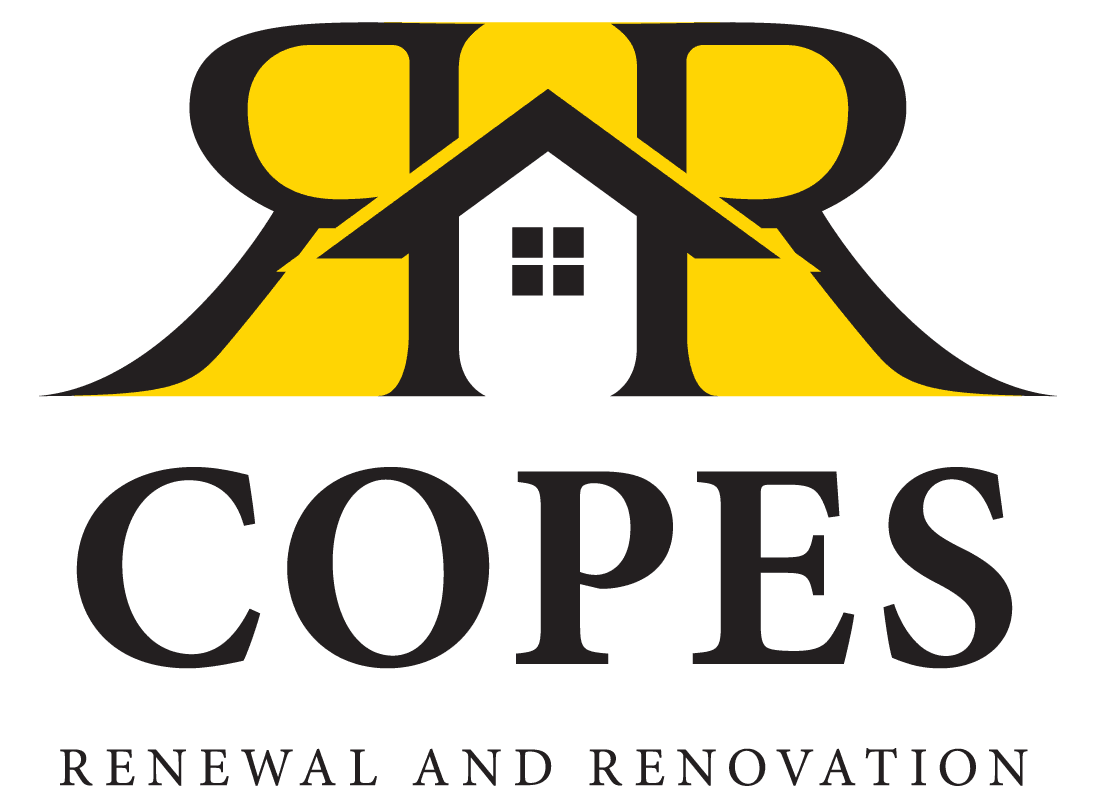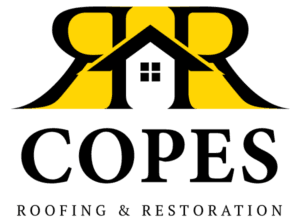A roof inspection is a thorough evaluation of your roof’s condition. It is performed by professional roof inspectors to identify damage, wear, or potential issues before they become costly problems.
A routine roof inspection is a crucial part of home maintenance that can save you thousands in repair costs while extending your roof’s lifespan. At Copes R&R Construction, our team of certified roof inspectors provides detailed evaluations that protect your investment and give you peace of mind about one of your home’s most important structural components.
4 Types of Roof Inspections
Routine Maintenance Inspections
A routine roof inspection is a preventative measure typically performed once or twice per year. These inspections focus on identifying minor issues before they develop into significant problems that could compromise your roof’s integrity. During a routine roof inspection, roof inspectors check for early signs of wear, loose materials, and potential weak points that might need attention in the near future.
Storm Damage Assessments
Storm damage assessments are conducted after severe weather events to document and evaluate any damage that may have occurred. These specialized inspections focus on identifying immediate threats to your roof’s integrity, including displaced shingles, punctures from debris, and potential water intrusion points. Insurance companies often require these assessments before processing claims related to weather events.
Real Estate Transaction Inspections
A real estate transaction roof inspection occurs during the home-buying or selling process. This is to determine the roof’s condition and lifespan. These thorough evaluations provide documentation about the roof’s current state, any existing damage, and estimated repair or replacement timelines. Both buyers and sellers benefit from understanding the exact condition of the roof, which can significantly impact property value and negotiation terms.
Insurance Inspections
Insurance inspections are conducted either at the request of insurance companies or homeowners seeking coverage. These assessments verify the roof’s condition, age, and compliance with local building codes to determine insurability and premium rates. Insurance inspectors document the roof’s materials, installation quality, and current condition, providing crucial information that affects your coverage options and costs.
What Do They Do In a Roof Inspection
- Exterior Visual Assessment – Inspectors begin by examining your roof from the ground to identify obvious damage or irregularities.
- Physical Roof Examination – When safe to do so, inspectors climb onto the roof to closely evaluate its surface condition. They walk carefully across the roof, checking for soft spots, damaged areas, and the overall integrity of roofing materials.
- Flashing Inspection – Special attention is given to examining all flashing around chimneys, vents, skylights, and roof valleys for signs of separation or deterioration.
- Gutter Evaluation – Inspectors check gutters and downspouts for proper attachment, debris accumulation, and signs of roof material granules that indicate shingle deterioration
- Attic Examination – A comprehensive roof inspection includes checking the underside of the roof from the attic space. Inspectors look for water stains, light penetration, ventilation issues, and signs of structural problems not visible from outside.
- Moisture Detection – Using specialized equipment, inspectors may conduct moisture readings to identify water infiltration that isn’t yet visible to the naked eye.
- Documentation and Reporting – The inspector documents all findings with photographs and detailed notes, then compiles this information into a comprehensive report.
3 Common Problems Identified During a Roof Inspection
Weather-Related Damage
Extreme weather events can compromise your roof’s protective capabilities, creating entry points for water that lead to interior damage, mold growth, and structural weakening. Left undetected, these issues often spread beneath the surface, multiplying repair costs and potentially leading to complete roof failure during subsequent weather events.
3 Types of Weather-Related Damage
- Wind Damage – High winds can lift, crack, or completely remove shingles, leaving underlying roof components exposed to the elements. Even seemingly minor displacement can create water entry points that lead to significant interior damage over time.
- Water Pooling – Improper drainage or roof design can lead to standing water that degrades roofing materials and eventually finds its way into your home. Even small amounts of pooling water can cause premature aging of roofing materials and seep into tiny cracks during freeze-thaw cycles.
- Lightning Strikes – Though rare, lightning can cause immediate and catastrophic damage to roofing systems, potentially creating fire hazards or structural failures. Strike points often create entry paths for water that can damage electrical systems and interior components.
Structural Issues
Structural roof issues often indicate problems that extend beyond the roofing materials themselves. These concerns typically involve the underlying support system that maintains your roof’s integrity and protects your home. Undetected structural problems can lead to catastrophic roof failure, compromise your home’s stability, and create safety hazards for occupants.
4 Common Structural Issues
- Sagging Roof Deck – A roof that appears to dip or sag indicates significant structural problems with rafters, trusses, or the roof deck itself. This condition often results from long-term water damage, excessive weight loads, or improper original construction techniques.
- Rotting Support Beams – Persistent moisture can cause wooden structural components to rot, compromising their ability to support the roof’s weight. Advanced rot may require complete replacement of major structural elements and is often accompanied by mold issues.
- Inadequate Bracing – Roofs without proper structural bracing may shift during high winds or under weight loads, causing damage to roofing materials and creating leak opportunities. Proper bracing is especially important in areas prone to severe weather events.
- Wall Separation – In severe cases, roof structural issues can cause separation between the roof and supporting walls, evidenced by visible gaps or uneven connection points. This serious condition indicates potential whole-house structural concerns requiring immediate professional assessment.
Material Deterioration
Material deterioration represents the gradual breakdown of your roofing system. Identifying these issues early through a roof inspection allows for targeted maintenance. Without proper detection, deteriorating materials can fail suddenly during adverse weather, leading to water intrusion, energy efficiency losses, and much more extensive damage to your home’s interior and structure.
6 Types of Material Damage
- Shingle Granule Loss – The protective granular coating on asphalt shingles wears away over time, leaving dark spots and filling gutters with granule debris. This erosion exposes shingles to accelerated UV damage and significantly shortens roof lifespan.
- Cracked or Curling Shingles – Age and weather exposure cause shingles to become brittle, crack, curl at the edges, or cup in the center. These deformations create entry points for water and reduce the roof’s ability to shed water properly.
- Blistering – Trapped moisture or manufacturing defects can create bubbles or blisters in roofing materials that eventually rupture, leaving vulnerable spots. These compromised areas often fail first during severe weather events.
- Moss and Algae Growth – Organic growth retains moisture against roofing materials, accelerating deterioration and potentially lifting shingles from their proper position. Beyond cosmetic concerns, heavy growth can cause significant material damage if left untreated.
- Membrane Shrinkage – On flat or low-slope roofs, membrane materials can shrink over time, pulling away from edges, corners, and penetrations. This shrinkage creates vulnerable seams where water can enter the roofing system and cause extensive damage.
- Flashing Deterioration – Metal flashing around roof penetrations, valleys, and transitions can corrode, separate from adjoining materials, or develop holes. These critical waterproofing components require special attention during inspections to prevent leaks in vulnerable areas.
4 Benefits of a Professional Roof Inspection
Early Problem Detection
A professional roof inspection provides the expertise needed to identify minor issues. Trained inspectors can spot subtle signs of deterioration or damage that the average homeowner might miss. This early detection allows for timely, targeted repairs that are typically less expensive and less disruptive than emergency fixes or complete roof replacements.
Extended Roof Lifespan
A regular professional roof inspection can significantly extend your roof’s serviceable life. When minor issues are promptly addressed, your roofing materials can function as designed, maximizing your initial investment. Professional inspectors can also recommend preventative measures specific to your roof type and local climate conditions that help maintain optimal performance throughout changing seasons.
Insurance Compliance
Many insurance policies require documentation of regular roof maintenance to maintain full coverage. After weather events, having a professional roof inspection report can ensure you receive appropriate compensation for legitimate damage. Some insurance companies even offer premium discounts for homes with documented regular roof inspections, recognizing the reduced risk of catastrophic claims.
Peace of Mind
Knowing your roof has been thoroughly evaluated by qualified experts allows you to weather storms with less anxiety about potential leaks or damage. This assurance is particularly valuable before severe weather seasons or when purchasing a new home, when understanding your roof’s true condition is essential for proper planning and budgeting.
Conclusion
A roof inspection is a wise investment in your home’s longevity and your financial security. By identifying and addressing minor issues before they escalate, professional roof inspectors help you avoid costly emergency repairs and extend the life of one of your home’s most critical components. The small cost of periodic professional evaluations pays dividends in preserved property value and prevented damage.
Don’t wait until you notice leaks or visible damage to consider your roof’s condition. Contact Copes R&R Construction today to schedule your comprehensive roof inspection with our experienced team of roofing professionals. For more information about our services and helpful maintenance tips, visit our Facebook page where we regularly share expertise on protecting your home investment.


